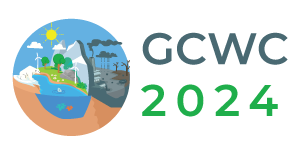
Hakim Sabzevari University, Iran
Abstract:
In this study, we aim to compare the climatic conditions of Surface Urban Heat Island (SUHI) in Tehran and its suburbs using day/night time data from three satellites. A high-resolution Land Surface Temperature (LST) data from MODIS Aqua, Sentinel-3, and Landsat 8 were selected to facilitate this study. The highest values of LST/UHI are observed in downtown Tehran and suburban areas at night. The temperature difference also shows an increase at night in Tehran and the western suburbs, while it decreases during the day. When comparing LST/UHI with altitude in different directions, it is found that urban areas and the south, southeast, southwest, and west suburban areas experience higher temperatures at night. MODIS LST products are more appropriate for checking nighttime SUHI in Tehran's Great area in comparison to other products. Moran's I indicates that the highest positive values occur during seasonal and annual periods at night. The Getis index demonstrates a consistent pattern across all seasons, and this trend persists throughout the year. The seasonal and annual UHI difference between Tehran and its suburbs is 5 °C. The LST diagram reveals that higher temperatures occur during warm months. The temporal NDVI distribution indicates lower NDVI values from June to February and summer to winter. The spatial distribution shows that due to the lack of NDVI index in urban areas, LST/UHI values are higher at night in Tehran compared to the suburbs. UHI is not limited to urban areas but has also spread beyond the city borders. As a result, the highest UHI values are found in downtown Tehran and its southeast, south, southwest, and west suburbs.
Biography:
I obtained my Bachelor's degree in Geography and then pursued further studies in Master's and Ph.D. in climate which allowed me to achieve the top rank in my field. I recently completed my Ph.D. dissertation with an excellent grade on 11th March, approximately two months ago. Now, I attempt to find a good position and continue further studies in postdoctoral. I am a skilled and creative Climatologist with a proven track record in analyzing climate trends and enormous enthusiasm for research. I am proficient in using advanced tools and software to interpret complex meteorological data sets. Through my research, I have developed my problem-solving skills and demonstrated an ability to work effectively under pressure. I am known for being friendly and adaptable when working within a team, as well as having a strong determination to gain goals. I have published two papers based on my thesis work, with a third paper currently in progress. My previous research experience has involved utilizing Remote Sensing (RS) and Modeling techniques to study Land Surface Temperature (LST) and Urban Heat Islands (UHI) using thermal bands from satellites such as MODIS, SENTINEL-3, and Landsat 8. I have also conducted comparative analyses of temperature trends and changes in various cities in Iran using long-term data. In addition to my expertise in RS and Modeling, I am proficient in Geographic Information System (GIS), Google Earth Engine, The Grid Analysis and Display System (GrADS), Climate Data Operators (CDO), atmospheric circulation patterns, climatic modeling tools like RegCM4, Hysplit, boundary layer analysis, air pollution studies, among others.
